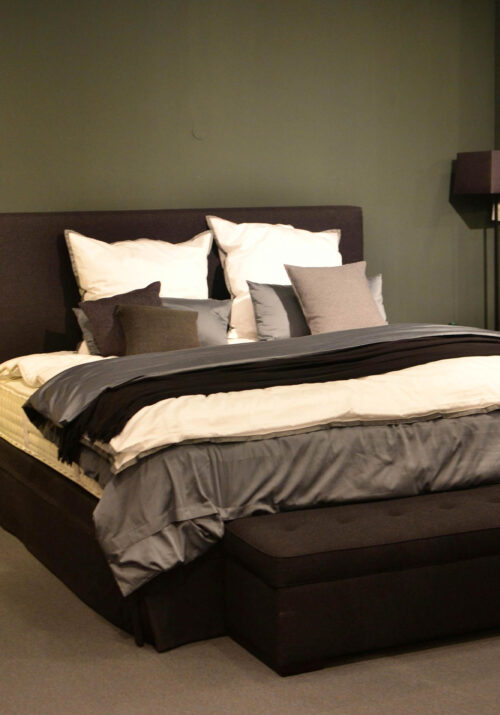Designing a space for children entails more than just aesthetics; it involves creating an environment that encourages exploration, sparks creativity, and instills a sense of organization.
In this guide, we’ll delve into ten innovative strategies for designing a lively children’s space that seamlessly integrates fun and orderliness, ensuring both kids and parents are thrilled with the outcome.

Involve Your Children in the Design Process
Empower your children by involving them in the design process of their room. While you may have certain preferences and guidelines in mind, giving them a say in the decision-making process can foster a sense of ownership and pride in their space. Present them with choices that align with your vision, such as selecting from a range of color palettes or furniture options that meet your criteria for safety and functionality.
However, allowing them to ultimately choose from the options you’ve curated will give them the joy of feeling like they’re making decisions independently. This collaborative approach not only ensures that the room reflects their personalities and interests but also strengthens the bond between parent and child as you embark on this creative journey together.
Select a Stimulating Color Scheme
Kickstart the design process by selecting a vibrant color palette that evokes joy and energy. Bold tones like sunshine yellow, sky blue, and lime green can invigorate the room, while softer pastels offer a serene ambiance. Experiment with mixing and matching colors to add depth and intrigue to the space, and consider incorporating playful patterns and textures to stimulate visual interest.
Remember, color has a profound impact on mood and behavior, so choose wisely to create the desired atmosphere.
Establish Functional Zones
Efficiently utilize the space by dividing it into distinct functional zones tailored to different activities. Allocate areas for play, reading, arts and crafts, and storage, ensuring each zone serves a specific purpose. Implement visual cues such as rugs or furniture arrangements to delineate these zones while maintaining an open layout conducive to movement and exploration.
By clearly defining each area, you can promote a sense of order and purpose, encouraging kids to engage in various activities independently.
Infuse Interactive Elements
Infuse the space with interactive features that ignite imagination and encourage active play. Consider installing a chalkboard wall for doodling and creativity, or a climbing wall to promote physical activity.
Incorporate versatile furniture pieces like bean bags or modular seating arrangements that adapt to various play scenarios, fostering flexibility and engagement. Interactive elements not only provide endless entertainment but also encourage social interaction and physical development, enriching the overall play experience.
Prioritize Safety Measures
Ensure the safety of the space by selecting furniture with rounded edges, anchoring heavy items to prevent tipping, and using non-toxic materials throughout. Conceal electrical outlets and secure cords to minimize potential hazards. Prioritizing safety not only provides peace of mind for parents but also creates a secure environment for children to explore and play freely.
Remember, safety should always be the foremost consideration in any children’s space design.
Keep reading to uncover 10 expert tips for crafting a vibrant and organized children’s space that seamlessly blends fun and functionality, ensuring an engaging environment for your little ones to thrive in.
Optimize Storage Solutions
Maximize functionality and minimize clutter with strategic storage solutions. Invest in multi-purpose furniture with built-in storage compartments, such as ottomans with hidden storage or beds with drawers underneath. Utilize wall-mounted shelves, bins, and baskets to keep toys, books, and art supplies organized and easily accessible, promoting a tidy and organized space.
Effective storage solutions not only keep the room looking neat but also teach children valuable organizational skills that will serve them well into adulthood.
Cultivate Creativity with Whimsical Decor
Inspire creativity and imagination through whimsical decor accents that captivate young minds. Integrate themed elements like playful wall decals, themed rugs, or bedding adorned with beloved characters. Add a festive touch with colorful bunting or string lights, and proudly display children’s artwork to celebrate their creativity and individuality.
Personalized decor elements not only add personality to the space but also create a sense of ownership and pride for children, fostering a positive and nurturing environment.

Embrace Versatile Furnishings
Select furniture that adapts to the evolving needs of growing children. Choose convertible cribs that transition into toddler beds, bunk beds with integrated study or play areas, or modular shelving units that can be reconfigured as storage requirements change.
Versatile furnishings ensure longevity and flexibility in design, accommodating children’s changing preferences over time. Investing in adaptable furniture not only saves money in the long run but also reduces waste by extending the lifespan of each piece.
Design for Accessibility and Inclusivity
Create a space that is accessible to children of all ages and abilities. Consider the height of furniture and storage solutions, ensuring that everything is within reach for little ones. Incorporate adjustable elements like height-adjustable tables or step stools to accommodate varying needs and promote inclusivity and independence. Designing with accessibility in mind not only ensures equal participation for all children but also promotes empathy and understanding from an early age.
Foster Organization with Visual Cues
Encourage organization and tidiness by incorporating visual cues such as labels on storage bins, baskets, and shelves. Utilize pictures or color-coded labels to help young children identify where toys and supplies belong, making cleanup time more manageable and instilling valuable organizational skills from a young age.
By providing clear guidelines for tidying up, you empower children to take ownership of their space and develop habits that promote orderliness and responsibility.
Embrace Adaptability
Lastly, embrace adaptability in your design approach to accommodate changing interests and preferences. Integrate modular furniture and decor elements that can be easily rearranged or updated to keep the space fresh and engaging as children grow.
Embracing adaptability ensures the space remains a dynamic and inviting environment for years to come. By allowing the space to evolve with the changing needs and interests of its inhabitants, you create a nurturing environment that fosters growth, creativity, and endless possibilities.
In conclusion, designing a playful children’s space requires a delicate balance of creativity, functionality, and organization. By implementing these ten innovative strategies, you can create a dynamic environment that nurtures imagination, promotes exploration, and fosters a sense of joy and wonder for children of all ages. From vibrant color schemes to versatile furnishings and strategic storage solutions, each element contributes to crafting a harmonious blend of fun and orderliness.
With careful planning and attention to detail, you can design a children’s space that captivates hearts and sparks endless hours of joyous play.











